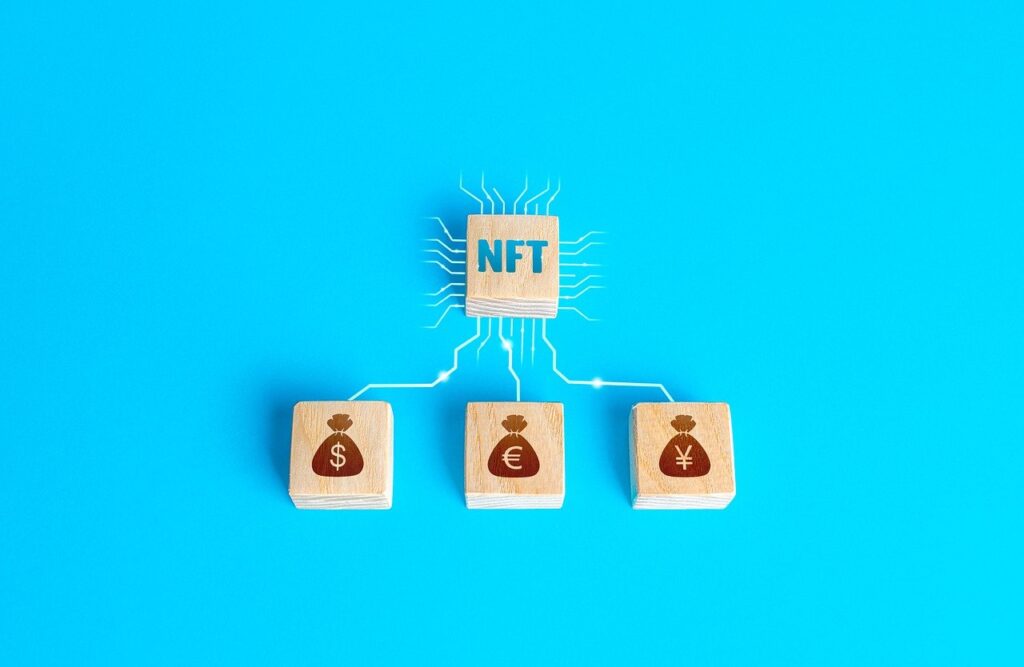NFTs have been making headlines recently as more companies get into the business of selling them. Nate DiCamillo of Coindesk reported about Fox Entertainment and Bento Box Entertainment investing $100 million in the NFT space by launching Blockchain Creative Labs, a new business unit specializing in blockchain technology. The company’s first project is a show called Krapopolis, which will be accompanied by “NFTs of one-of-a-kind character and background art and GIFs, as well as tokens that provide exclusive social experiences to engage and reward super fans.” Individuals are getting into the business of selling NFTs too. James Tarmy of Bloomberg reported that the source code for the world wide web is being auctioned by its author, computer scientist Sir Tim Berners-Lee, as an NFT. According to Robert Hart of Forbes, even Tiger King star Joe Exotic is getting into the business of auctioning NFTs. However, you may be wondering, “just what is an NFT?”
NFT stands for non-fungible token. An individual unit of a commodity that is fungible can be interchanged with other individual units of the same commodity. For example, a five-dollar bill in your wallet has the same value as a five-dollar bill in someone else’s wallet. If you trade your five-dollar bill for the other five-dollar bill, you still have $5. Nothing is gained nor lost from a trade like this because an individual unit of a fungible commodity is not inherently special or unique. Fungible commodities include physical currencies, precious metals, sweet crude oil, bonds, company shares, and even cryptocurrencies.
Unlike individual units of a cryptocurrency, individual NFTs are not interchangeable with other individual NFTs of the same type. This is because each individual NFT is unique. Furthermore, whereas bitcoins can be divided into satoshis, NFTs cannot be divided into smaller units. However, like cryptocurrencies, NFTs use blockchain technology. Inside every NFT is a smart contract that stores the data that makes the token unique. A smart contract is a computer program stored within a blockchain that automates the execution of a contractual agreement. Blockchain technology makes use of cryptographic hashing and a decentralized ledger. As a result, blockchains offer the benefits of immutability and traceability. Every time ownership of an NFT is transferred, the transaction is stored on the blockchain, and the history of transactions goes all the way back to the original creator. This means that the authenticity of an NFT can be verified without relying on a third-party. Furthermore, the immutability of the blockchain means that NFTs cannot be replicated to create counterfeits.
For the most part, an NFT exists to prove ownership of something that is one-of-a-kind. Thus, selling collectible items is arguably the most common application of NFTs. There are online games in which collectible characters, items, and locations are NFTs. Examples include CryptoKitties, Blockchain Heroes, Gods Unchained, The Sandbox, Decentraland, and more. NFTs can also be used to sell artworks, fashion, and sports tickets that can be verified for authenticity and cannot be counterfeited. However, NFTs are not limited to leisure. Although NFTs can be used for virtual real estate, Natalia Karayeneva of Forbes wrote about how NFTs can be used for the real, physical real estate industry. The smart contracts within NFTs could streamline the process of purchasing real estate. In the realm of education, NFTs can be used to make digital licenses and certifications that can be verified by employers. NFTs can also represent crypto addresses, unique wallets for storing cryptocurrency that are akin to usernames and email addresses. As NFTs grow in popularity, more applications may be discovered in the future.

